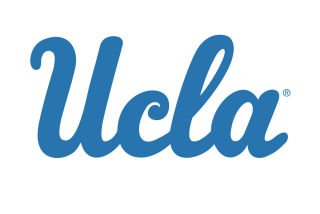Ultimately, NCAA Mediated a Family Quarrel
One last rehash of a UCLA basketball crisis, then and now:
On Nov. 6, 1996, the day UCLA fired Coach Jim Harrick for lying about an expense report and then trying to cover his tracks, then-Chancellor Charles E. Young scoured his brain for an analogy and came up with a humdinger.
“I don’t want to overstate it,” Young overstated, “but I think Watergate is analogous.”
On Thursday, the NCAA put UCLA on three years’ probation for violations during Harrick’s tenure.
Death penalty?
Well, no.
Banishment from the NCAA tournament?
Actually, UCLA can freely participate in next year’s tournament, provided Coach Steve Lavin’s lads qualify.
OK, what about scholarships? Tell us the NCAA stripped ‘em clean.
UCLA lost no scholarships.
The NCAA, in fact, seemed to go out of its way to hit the Bruins where it hurt least, denying the program six official recruiting visits for each of the next two seasons. This is the “punishment” for a school that hasn’t required many visits in recent years and, with only one returning senior, doesn’t figure to need many any time soon.
The NCAA sanctions were a wrist slap, a BB, compared to the bombshell UCLA dropped on the world a year ago last November, when Harrick’s firing for a serious but apparent first-time offense left many convinced there had to be more to the story.
We’ve waited a year and a half for the other sneaker to drop.
And now it has.
It sure wasn’t Watergate.
Whereas Young, since retired as UCLA’s chancellor, evoked quotations from Judge John J. Sirica, some of us now turn to a passage from that old Peggy Lee song and wonder, “Is that all there is?”
Thursday’s NCAA ruling mostly proved what most of us knew all along, that this whole mess was never really about the NCAA vs. UCLA.
It was always about UCLA vs. Jim Harrick.
Most of the violations UCLA admitted to in the NCAA’s report were discovered during an in-house, comb-the-area, fact-finding mission after Harrick’s firing.
Also, had the NCAA thought Harrick was such a low-down snake, it could have levied post-Westwood sanctions against him, the way it hunted down and punished Todd Bozeman after his scandal-scarred firing at California.
But the NCAA did not go after Harrick.
In fact, in its ruling, the NCAA required Harrick’s current employer, Rhode Island, only to “expand its monitoring of recruiting and submit a report to the committee by May 1, 1999.”
In summary, UCLA’s need to publicly justify Harrick’s firing--the five-alarm press conference, Young’s Watergate analogy--turned what might have been a brush fire into “Backdraft.”
UCLA is sticking to its story that Harrick’s firing wasn’t personal. Athletic Director Peter T. Dalis reiterated Thursday that had Harrick not asked UCLA assistant Michael Holton to help cover up Harrick’s lie about an NCAA-violating expense report involving UCLA recruits and players, Dalis would have stuck by his man.
‘I doubt whether Jim would have been dismissed,” Dalis said.
Of course, Harrick’s expedient firing ultimately paid off with the NCAA, which basically cited the quick ouster as a reason for going easy on UCLA.
Still, anyone willing to hold his nose and follow this story with a stick understood that Dalis and Harrick had been at odds for years, that these were two stubborn men with vastly different personalities and agendas.
Had Dalis been looking for impetus to rid himself of Harrick, he found plenty in the fall of 1996, when UCLA was embarrassed by revelations that a Chevy Blazer driven by star recruit Baron Davis had been registered in Harrick’s name.
Harrick would slip that particular violations noose, claiming that his son innocently (yuk, yuk) sold the car to Davis’ sister. However, that Dalis had to read about this cozy arrangement over coffee in his morning newspaper left him seething.
It wasn’t long after, conveniently, that Harrick’s trumped-up expense report hit Dalis’ desk.
Even the most ardent Harrick supporters understand that his urging an assistant to cover up his phony report was an ethical breach.
But in the unseemly world of college basketball, where plenty of unscrupulous coaches remain gainfully employed, Harrick’s actions to some did not deserve termination.
“This guy, he made a mistake,” Robert Tanenbaum, Harrick’s attorney, said Thursday. “He never should have misrepresented what happened. Nothing’s going to change that. But it’s like double-parking and getting the death sentence. Why didn’t they keep this thing in-house? Penance paid from within? There was no need to have this thing blown out of proportion like this, to turn it adversarial and antagonistic. [Harrick] never wanted that.
“Why not ask him at the end of the season to depart? Do it with some dignity. He did give some important service to the school. . . . “
It can be argued that, with tact and guile, a lot of this ugliness could have been avoided.
Had Dalis and Harrick settled this internally, with a stern warning and a strong rebuke, the sanctions that ultimately led to Thursday’s probation might never have been uncovered.
Given the evidence, the NCAA ultimately weighed in and rendered an appropriate punishment for what largely was a domestic dispute.
UCLA vs. Harrick wasn’t the NCAA’s scrape.
It was a family fight that spilled out into the street.
More to Read
Go beyond the scoreboard
Get the latest on L.A.'s teams in the daily Sports Report newsletter.
You may occasionally receive promotional content from the Los Angeles Times.







